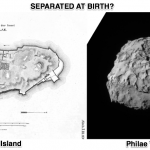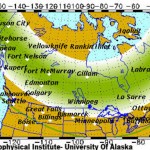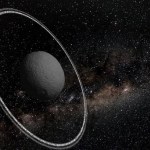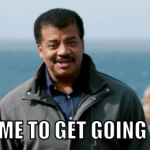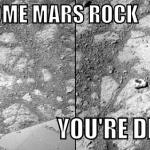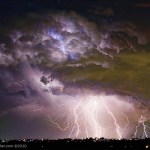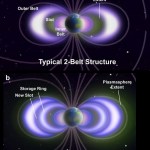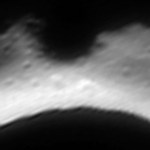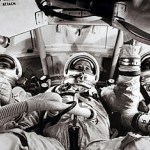Cosmos
Just so you know, Philae is a lander planning to land on a comet at this moment being landed on by an Earthling Spacecraft, and it is also an island in the Nile.
Before the Rosetta space craft got close, we had no idea what the comet looked like. Now we do. And it looks like Philae!
Coincidence????
Auroras are amazing sites because they are, of course, impossible. When Amanda and I got married a year or so ago in northern Minnesota, there was an amazing Aurora, surpassing what anyone at the wedding had ever seen in the state. Big colored curtains of light.
Tonight, and over the weekend, the northern lights will be majorly large and extensive, and visible from very far away. The the graph above (from here) gives you an indication of where you might see them. Anywhere north of the solid green line has a chance, depending on local conditions.
Remember that asteroid that was supposed to pass harmlessly by the Earth on Sunday? Well, things didn't go exactly as planned...
Apparently, a meteor hit Nicaragua late Saturday night, forming a 12 meter wide crater. This would be a small chunk to make a crater that little. It has not been confirmed yet, but there is a strong possibility that this meteor was associated with 2014 RC. NPR quotes AP which quotes a Nicaraguan government official as saying the meteor "appears to have come off an asteroid that was passing close to Earth." NPR also quotes the BBC which quotes another astronomer…
Phil Plait says "Don't Panic!" and he should know because he is the Death from the Skies!: The Science Behind the End of the World which is about things hitting the earth. The object is called 2014 RC and it was discovered on September 2nd. It will arrive on Sunday.
The object is about 20 meter across, and Phil told me on twitter yesterday that this is roughly the same size as the Chelyabinsk asteroid that made a pass over Russia last year.
Remember. Random events occur in clusters. Otherwise they would be called "regular events." So there is probably no meaning to two similar objects…
We know know what the famous announcement by the European Southern Observatory is. They found an asteroid with ring! Two of them!
...the remote asteroid Chariklo is surrounded by two dense and narrow rings.
Telescopes at seven locations in South America, including the 1.54-metre Danish and TRAPPIST telescopes at ESO’s La Silla Observatory in Chile were used to make this surprise discovery in the outer Solar System.
This unique finding has sparked much interest and debate since it is the smallest object by far to have rings and only the fifth body in the Solar System — after the much larger…
UPDATED: THIS is the discovery.
The European Southern Observatory will make an announcement tomorrow (or later today depending on where you read this, but Wednesday) about an amazing new discovery they made in outer space.
I'm not going to tell you what they found because it is top top secret. But it is very interesting and cool. What I can show you is part of the hilarious twitter feed called #ESOrumors that sprung up today in the Astronomy community.
That's just a sampling.
Stay tuned!
I'm sure that a lot of you, like me, are watching the rebooted version of Cosmos: A Spacetime Odyssey, with Neil deGrasse Tyson taking over the hosting duties originally handled so ably over 30 years ago by Carl Sagan. I definitely enjoyed the first episode and am looking forward to additional episodes. The only thing that annoys me is that Cosmos is on at the same time as The Walking Dead, but that's what DVRs were made for. The first episode, which is all I've seen thus far at this writing, was quite impressive, and the segment at the end in which Neil deGrasse Tyson talks about the time he…
If you missed the first (or later any) episode of Cosmos 2014, you can get it on Amazon Prime streaming (for a fee). It's worth it. Here are a few comments I jotted down (then lightly edited) while watching the first episode.
Neil does have his own spaceship, like Carl did. That's important because it lets him fly to interesting places. It is one of those spaceships of the imagination. Everybody should have one.
The visuals are amazing and informative and seem to be scientifically accurate to the extent possible. There is quite a bit of attention to scale, and how perspective shifts with…
Neil DeGrasse Tyson on CNN:
And while we are on the topic, Carl Sagan, of the original Cosmos, on climate change:
See also this from Chris Mooney at Mother Jones.
And just for the heck of it, here's my interview with Neil deGrasse Tyson from 2011.
Look at the rock on the right, and the lack of rock on the left. (Our left.) It is being reported that this jelly-donut size rock appeared out of nowhere on the Martian surface between photographs.
There are several possible explanations for this.
1) It grew there.
2) It was ejected from a steam vent or something and flew there.
3) This is what a Martian looks like. It will eventually move on.
4) The robot that took the first picture tossed the rock up while driving by.
5) It is a jelly donut.
6) The rock was placed there to cover up a footprint.
What do you think?
I love it when stuff…
He who lives by gravity shall die by gravity. That's what they say in the gravity biz, anyway. GROCE is the European "Gravity field and steady-state Ocean Circulation Explorer" Satellite which is a flying spacxe robot that has done some amazing research:
GOCE has a gradiometer with three accelerometers to measure gravity very accurately, to the level of 1 in 10^12th of Earth's gravity. In other words, if an X went to within Y meters of the detector, the detector could tell based on X's gravity. I'm not sure what X and Y are (I'm hoping someone who knows will fill in the blanks for us) but…
Cold Fusion was first reported in 1989. The original experiment was supposed to have produced extra heat that could not be explained wiht chemistry or electronics, so naturally, fusion was considered. Contrary to popular belief, that original experiment has been replicated successfully. The problem isn't that the first experiment produced actual extra heat and no one doing the same experiment could match that result. Rather, none of the attempts at using this experimental set up worked, including the first one. So, yes, the experiment was successfully replicated, and in all cases,…
There are bacteria that use Iron (and other elements) to make tiny magnets that they carry around so they don't get lost. (I anthropomorphize slightly.) There are isotopes of Iron that are not of the Earth, but are found only elsewhere in the universe.
Suppose an event happened elsewhere and spewed some of that cosmic Iron isotope, say Fe-60, onto the earth, and the bacteria who were busy making their tiny compasses at that time used some of it. Then the bacteria died and were trapped inlayers in seafloor sediment and later examined by scientists looking for ... well, looking for…
I love it when scientists say that! And, so said scientist Daniel Baker, speaking of a newly observed feature of the famous and well known, or at least, we thought well known, Van Allen Belts.
First discovered in 1958, the Van Allen belts have been thought to comprise two reservoirs of high-speed, electrically charged particles, corralled into separate doughnut-shaped rings by Earth’s magnetic field. The outer ring orbits at a distance of some 10,000–60,000 kilometres above Earth, and encircles an inner band of even more energetic particles, roughly 100–10,000 kilometres above Earth. ...…
UPDATE: Somebody found a hole in some ice.
This is a meteor streaking across the sky in the vicinity of the Urals:
Numerous additional films of that event and some analysis are on Phil Plait's blog, here.
Here's a FAKE video purported to be a crater formed by a fragment of that meteor BUT IT ISN'T:
From Phil Plait's blog: "Note also lots of hoaxes are turning up, like a video of a flaming crater that's actually a flaming pit in Turkmenistan that's been burning for decades (called "The Door to Hell"). Be cautious and be skeptica"
... apparently the shock wave of the meteor passing over…
The #LearningSpace Google Hangout was talking today about the Galileoscope project. Galileo invented (I'm sure the story is more complex) the telescope and all that, and the Galileoscope project is HERE.
The Galileoscope is a high-quality, low-cost telescope kit developed by a team of leading astronomers, optical engineers, and science educators. No matter where you live, with this easy-to-assemble, 50-mm (2-inch) diameter, 25- to 50-power achromatic refractor, you can see the celestial wonders that Galileo Galilei first glimpsed 400 years ago and that still delight stargazers today. These…
Comet ISON appears to be a new comet. This bundle of icy dirty icy stuff was tugged by subtle gravitational forces out of the Ort Cloud, which is really really far away, and is now falling towards the sun. It will pass within view of us Earthlings later this year on its way towards the sun, and again, after it has swung around the sun, possibly displaying a spectacular tail, as new comets seem to do. Or, it could become vaporized during its first orbit. No one knows yet. Since ISON's maximum visibility will be around Christmas, there will be all sorts of annoying references to Bible…
In February, Asteroid 2012 DA 14 will come so close to earth that it will be nearer to our planet than many satellites are. This asteroid, which really should get a new name, is about half the size of a football field. Its orbit is similar to that of the Earth itself, in size and shape, but at an angle to the Earth's plane, so it's like the asteroid and the earth are driving in circles on two oval tracks that intersect at two points but there is no red light.
Asteroid 2012 DA 14 was discovered with gear provided to an observatory with a grant from the Planetary Society. Which makes me…
Suddenly and for the first time I saw Amanda as a little child wide eyed with both awe and fear, among other children some sitting on the floor, some in chairs, some standing behind desks, eyes trained on a TV monitor and their teacher as the sudden realization dawned on all of them that the Space Shuttle Challenger had been consumed in a fiery, deadly explosion.
The teacher on board was incinerated before their very eyes. As the explosion developed, shooting out huge arms of smoke and the voice-over began to acknowledge that something was wrong, NASA's space program was suddenly…
I only barely remember the disaster. It was on this day, but in 1967. In recent years, I've wondered why my memory of the death of Gus Grissom, Ed White, and Roger Chaffee in the Apollo 1 space craft is so vague. I have memories of earlier space activities, but most of those memories are really memories of reading about things in books and magazines, and playing "astronaut" more or less constantly. I had limited access to a TV and TV coverage of every detail of life everywhere all the time had not been invented yet. But really, the main reason I only barely remember the event despite my…
